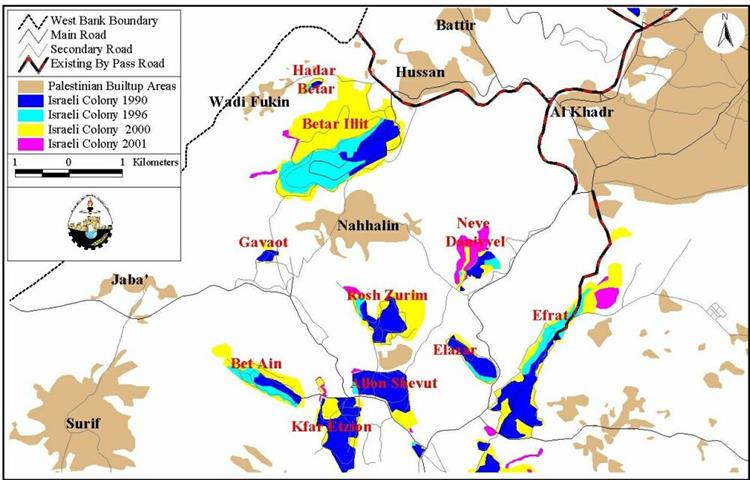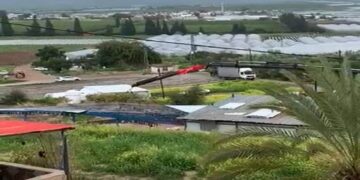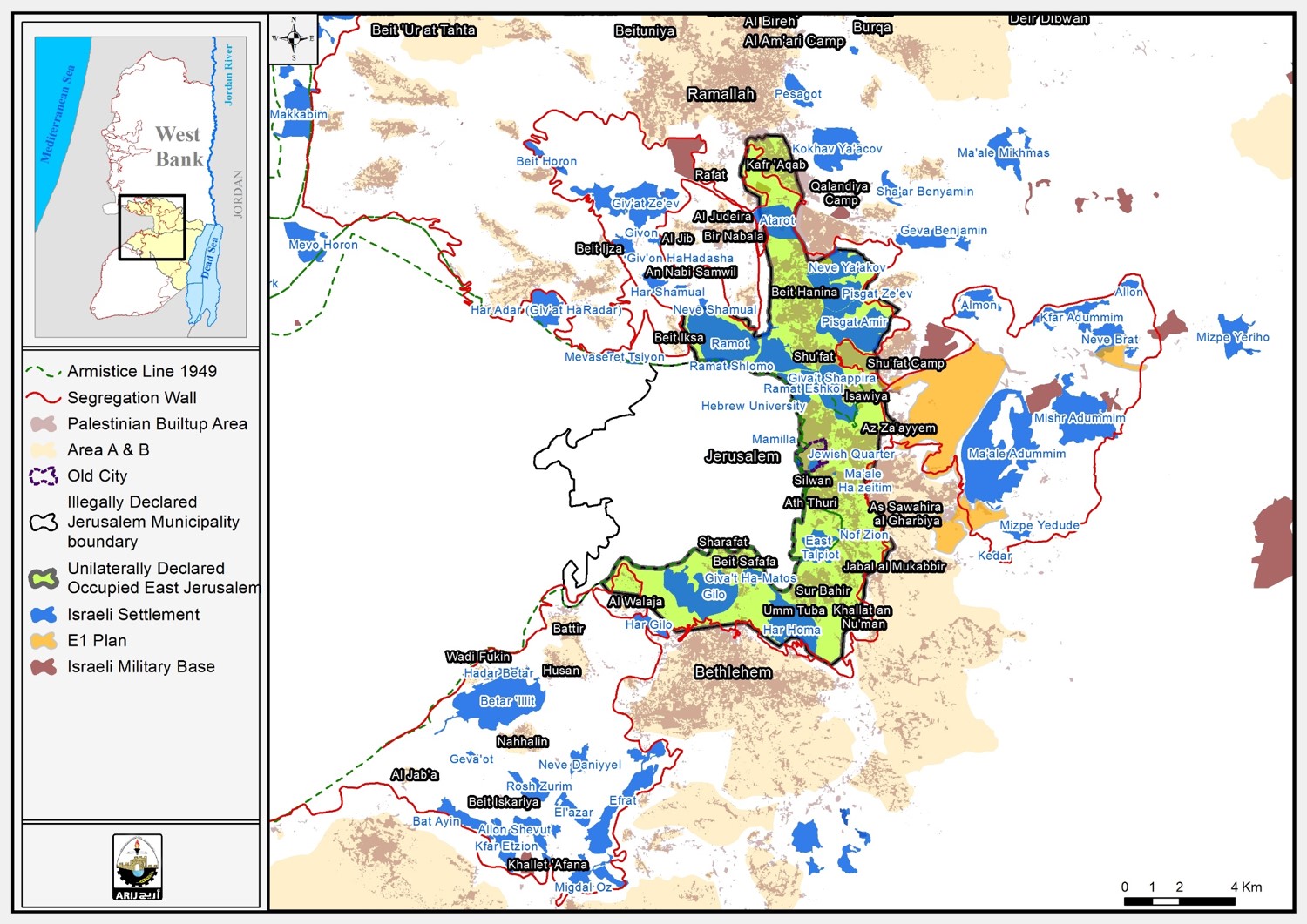Introduction:
The Palestinian village of Nahhalin is located 20 km to the southeast of Bethlehem city, with a population of 7,000. Before the occupation of the west bank in the year 1967, the original area of the village was 12,000 dunums. The Israeli occupying authorities have confiscated more than 60% of this area in order to construct settlements.
Nahhalin and the nearby villages of Wadi Fokin and Husan, are threatened by further expansion of the surrounding Israeli settlements, especially the settlement of Betar, which lies to the north of the village. From the south, Nahhalin is bordered by the Gush Etzion settlements (Etzion block), covering around 50% of the land that originally belonged to the village. The block includes the military settlement of Gava'ot and the agricultural settlement of Rosh Zurim. See Map
The Betar Illit Settlement:
The Betar settlement which means in Hebrew ''the mountain's house'', was established in 1989, on confiscated land that belong to the three Palestinian villages of Nahhalin, Wadi Fokin and Husan, exceeded a total population of 16,519 and an area of 3201.66 dunums in the year 2001 (ARIJ GIS 2001). Area expansion of the settlement has increased by 130.4% during the last 5 years, after Oslo agreement,See Table.
Table1: Area Expansion of Betar settlement 1990-2001
|
Area 1990 |
Area 1996 |
Area 2000 |
Area 2001 |
Expansion 1996-2001 |
Expansion % (1996-2001) |
|
430.4 |
1389.5 |
3144.5 |
3201.6 |
1812.1 |
130.4 |
Source: ARIJ GIS 2001.
Lands under threat of confiscation:
Speaking to ARIJ field workers, a resident from Nahhalin confirmed that a mountain south of Betar settlement called '' Sider Ei'n Fares'' is threatened to be confiscated by the Israeli government in an attempt to connect the settlement to the 1948 borders. Villagers told us that a military order for confiscation is hanged in Gush Etzion military administration head office, but was never given by hand to the owners of the land. In fact as seen in photo three, work on establishing a new road over the above mentioned mountain is taking place. See Photo 3
In addition, another mountain called ''Abu El kroon'', is under the threat of confiscation. The Israeli occupying forces have uprooted Olive Trees that belong to the villagers on the top of the mountain and cultivated forestry trees instead. However the aim of this contradicting Israeli action is to grab the mountain using an old policy of confiscation; claiming the ownership of the land after cultivating it for two years. Palestinian villagers of Nahhalin, in an attempt to face such a threat, replanted the mountain with olive trees. See Photo 4
Recently, a road was bulldozed to connect the Gava'ot military base to Betar settlement from the south where water pipes network is running under the road. Approximately 20 Dunums are confiscated to establish this road (ARIJ GIS 2002). See Photo 5 & Satellite image
Environmental impact:
The Betar settlement has wastewater treatment units that contaminate a spring adjacent to the settlement. This happens when the extra amounts of wastewater flood from the sewage storage tanks of the Betar settlement, See Photo 6.
This spring is still used by the Palestinians to irrigate the fields; in addition, the shepherds bring their livestock to drink from it. Another wastewater unit empties the excess sewage directly to the Olive Tree fields, and results in polluting the village of Nahhalin and it's surrounding. See Photo 7
Conclusion:
The consequence of the ongoing Israeli policy of land confiscation and the expansion of Betar settlement will cause the complete isolation of the village of Nahhalin, and cutting it off from its geographical continuity with other neighboring villages and the city of Bethlehem. As the village is threatened by the presence of the ever-growing settlements, the future still looks increasingly uncertain.
Related topics:
- The Encirclement Of Nahalin Village.
- Betar Illit Settlement Expansion and The Fate of Wadi Fukin Village.
- An Overview of the Expansions in the Etzion Settlement Block
Prepared by:
The Applied Research Institute – Jerusalem




















